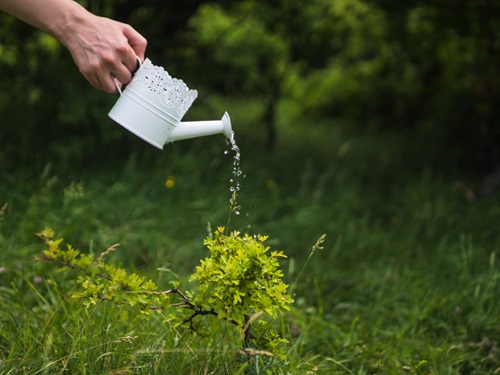Sustainable Practices for Thriving Vegetable Gardens
Water is a precious resource, especially in gardening, where it plays a critical role in the growth and productivity of your vegetable garden. As climate change intensifies and water becomes scarcer, adopting eco-friendly watering techniques is not only environmentally responsible but also essential for maintaining a thriving vegetable garden. In this post, we’ll explore sustainable practices that conserve water while ensuring your garden continues to flourish.
The Importance of Sustainable Watering in Gardening
Watering your garden effectively is about more than just keeping plants hydrated; it’s about managing this resource wisely to promote long-term sustainability. Traditional watering methods often lead to excessive water waste through evaporation, runoff, and overwatering. By embracing eco-friendly watering techniques, you can reduce your garden’s water consumption, lower your water bills, and create a more resilient garden that thrives even during dry spells.
Benefits of Eco-Friendly Watering Techniques
- Water Conservation: Eco-friendly methods minimize water waste, making sure that every drop counts.
- Healthier Plants: Proper watering practices ensure plants receive the right amount of water, reducing the risk of root rot and other water-related issues.
- Cost Savings: Reduced water usage translates into lower utility bills, especially important for large gardens.
- Environmental Impact: Less water waste means less strain on local water supplies and a reduced carbon footprint from pumping and treating water.
Understanding Your Garden’s Water Needs
Before diving into specific eco-friendly watering techniques, it’s crucial to understand your garden’s unique water requirements. Different plants have different water needs, and factors like soil type, climate, and garden layout all influence how much and how often you should water.
Soil Type and Water Retention
Soil plays a significant role in determining your garden’s water needs. Sandy soils drain quickly but require more frequent watering, while clay soils retain water longer but are prone to waterlogging. Loamy soil, which balances sand and clay, is ideal for most vegetable gardens due to its good drainage and moisture retention properties.
To optimize watering:
- Test Your Soil: Determine your soil type by feeling its texture. Sandy soils feel gritty, while clay soils are sticky. Loamy soils crumble easily and hold their shape when squeezed.
- Amend Your Soil: Improve water retention in sandy soils by adding organic matter like compost. For clay soils, work in sand or organic material to improve drainage.
Climate Considerations
Your local climate significantly affects your garden’s water needs. Gardens in hot, dry regions will require more frequent watering than those in cooler, wetter climates. Additionally, seasonal changes will impact your watering schedule—plants need more water during hot summer months and less during the cooler, wetter seasons.
- Monitor Weather Patterns: Adjust your watering schedule based on weather forecasts. Skip watering if rain is expected, and increase it during heatwaves.
- Mulch to Retain Moisture: Use organic mulch to reduce evaporation and maintain consistent soil moisture.
Top Eco-Friendly Watering Techniques for Vegetable Gardens
Implementing eco-friendly watering techniques is key to conserving water and ensuring your garden thrives. Below are some of the most effective methods you can incorporate into your gardening routine.
Drip Irrigation Systems
Drip irrigation is one of the most efficient watering methods available. It delivers water directly to the base of the plants through a network of tubes and emitters, minimizing water loss due to evaporation and runoff. This targeted approach ensures that water goes exactly where it’s needed—at the root zone—promoting healthy plant growth.
- Benefits of Drip Irrigation:
- Reduces water waste by up to 60% compared to overhead sprinklers.
- Prevents soil erosion and nutrient runoff.
- Lowers the risk of fungal diseases by keeping foliage dry.
- How to Set Up a Drip Irrigation System:
- Design Your Layout: Plan your garden and map out where the tubing will run. Focus on the root zones of plants.
- Install the System: Lay the main tubing along the garden beds and connect the emitters at intervals based on plant spacing.
- Adjust for Efficiency: Test the system to ensure even water distribution. Adjust the flow rates as needed.
Rainwater Harvesting
Rainwater harvesting involves collecting and storing rainwater for later use in your garden. This method not only conserves municipal water but also provides plants with chlorine-free water, which is often better for their growth. Installing a rain barrel or a more extensive rainwater catchment system is a simple yet effective way to reduce your water usage.
- Steps to Harvest Rainwater:
- Install Gutters: Direct roof runoff into a rain barrel using gutters and downspouts.
- Choose the Right Barrel: Select a rain barrel with a capacity that suits your garden’s needs, typically between 50 to 100 gallons.
- Filter and Use: Ensure the rainwater is free from debris with a mesh screen and use it to water your garden during dry periods.
Mulching for Moisture Retention
Mulching is a powerful eco-friendly technique that involves covering the soil with organic materials like straw, wood chips, or compost. Mulch helps retain soil moisture, suppresses weeds, and regulates soil temperature. By reducing the rate of evaporation, mulching significantly lowers the frequency of watering required in your garden.
- Types of Mulch:
- Organic Mulch: Straw, wood chips, leaves, and compost. These materials decompose over time, adding nutrients to the soil.
- Inorganic Mulch: Gravel, stones, or landscape fabric. While they don’t decompose, they are effective in moisture retention and weed suppression.
- How to Apply Mulch:
- Prepare the Soil: Remove weeds and water the soil thoroughly before applying mulch.
- Apply Mulch Evenly: Spread a 2-4 inch layer of mulch around your plants, leaving a small gap around the stems to prevent rot.
- Reapply as Needed: Organic mulch breaks down over time, so replenish it as necessary to maintain its effectiveness.
Soaker Hoses for Efficient Watering
Soaker hoses are another excellent tool for conserving water in the garden. These hoses are made from porous material that allows water to seep out slowly along their entire length, directly into the soil. This method ensures that water reaches the root zone without wetting the foliage, reducing the risk of disease.
- Setting Up Soaker Hoses:
- Positioning: Lay the soaker hoses along the base of your plants, ensuring they run parallel to the rows.
- Cover with Mulch: To improve efficiency and reduce evaporation, cover the hoses with a layer of mulch.
- Connect to a Timer: Automate watering by connecting the soaker hose to a timer, ensuring consistent watering while conserving water.
Watering at the Right Time
Timing is everything when it comes to watering your garden. To maximize efficiency and reduce water loss, it’s best to water your garden in the early morning or late evening when temperatures are cooler, and evaporation rates are lower.
- Morning vs. Evening Watering:
- Morning: Watering in the morning gives plants a chance to absorb water before the heat of the day, reducing the risk of evaporation.
- Evening: Watering in the evening can be effective in cooler climates, but it may increase the risk of fungal diseases in humid areas.
Grouping Plants with Similar Water Needs
An often-overlooked technique is grouping plants with similar water requirements together. This strategy, known as hydrozoning, ensures that each plant receives the right amount of water without waste.
- Steps to Group Plants:
- Assess Water Needs: Identify the water requirements of each plant in your garden.
- Organize Your Layout: Place plants with similar needs together, such as drought-tolerant herbs in one area and water-loving vegetables in another.
- Adjust Watering Methods: Use different watering techniques, such as drip irrigation for high-need areas and soaker hoses for drought-tolerant zones.
Conclusion: Embrace Eco-Friendly Watering for a Greener Garden
By adopting these eco-friendly watering techniques, you can significantly reduce water waste while maintaining a healthy, productive vegetable garden. Whether you choose to install a drip irrigation system, harvest rainwater, or simply adjust your watering schedule, these practices will contribute to a more sustainable garden and a healthier planet.
Are you ready to implement these sustainable practices in your vegetable garden? Start small by trying one or two of these techniques, and watch your garden thrive. For more tips on sustainable gardening, be sure to explore our other blog posts and subscribe to our newsletter.


Leave a Reply